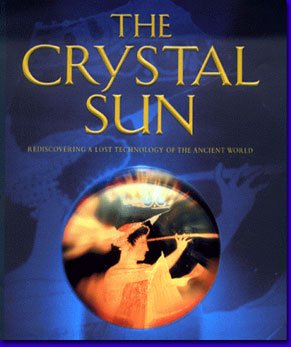Lost Technology Of The Ancients – The Crystal Sun
MessageToEagle.com – The ancient Greek Pythagoreans of the 5th century BC believed that the sun was a gigantic crystal ball larger than the earth, which gathered the ambient light of the surrounding cosmos and refracted it to earth, acting as a giant lens.
A giant lens? In the 5th century BC?
Perhaps it was because nobody until now has been willing to recognise that lenses existed in antiquity, and that the crystal sun idea was overlooked, and has never been described in any books on the history of science or philosophy.
However, it appears in my latest book The Crystal Sun, the paperback of which is published by Arrow (London) in Britain and Australia on 1 February. The hardback, from Century (London), has been available in Australia since May, 2000.
What, then, is all this about ancient lenses? Surely some mistake?!
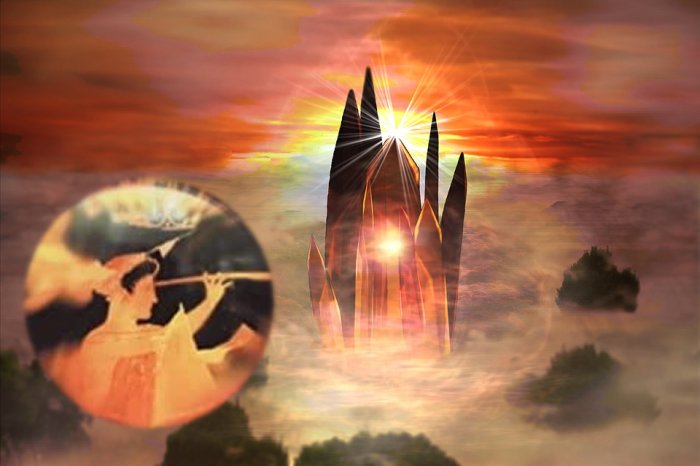
The fact is that I have located more than 450 ancient lenses in museums all round the world, and I even own a Greek crystal lens of the 6th century BC myself.
Photos of many of these ancient lenses appear in my book. Anyone interested in full details of the actual lenses themselves should obtain the hardback edition of my book, because ten appendices full of such detailed information have been omitted from the paperback because the book was too thick.
Ancient lenses! Well, how far back do they go?
The earliest actual lenses which I have located are crystal ones dating from the 4th Dynasty of Old Kingdom Egypt, circa 2500 BC. These are to be found in the Cairo Museum and two are in the Louvre in Paris. But archaeological evidence showing that they must have been around at least 7 00 years earlier has recently been excavated at Abydos in Upper Egypt. A tomb of a Pre-Dynastic king there has yielded an ivory knife handle bearing a microscopic carving which could only have been done under considerable magnification (and of course can only be seen with a strong magnifying glass today).
Thus, we know that magnification technology was in use in Egypt in 3300 BC.
But magnification technology was not of interest merely for making and viewing small carvings. Its most important use was in telescopes. In fact, on the jacket of my book the reader will encounter an ancient image of someone looking through a telescope.
This is a photo I took of a fragment of a Greek pot excavated about twenty years ago at the Acrocopolis in Athens, and dating to about the 6th century BC.
If there is all this evidence, why has no one ever talked about it before? The answer seems to be that unique capacity for stupidity which so distinguishes the human race, for obstinacy and the determination not to see. I call it consensus blindness. Everybody agrees not to look at things that make them uncomfortable, or which they think shouldn’t exist. Therefore, the fact that more than 450 ancient lenses have been sitting around in the world’s museums for all of these years and have been invisible is explicable only by invoking the theory that people subconsciously conspire not to see what they don’t want to see.
It is not as if I have come up with a little bit of vague evidence and want to use it to construct some wacky theory of my own. There are plenty of people crying in the wilderness with theories based on a little bit of disputed evidence. That is not the case with my book at all. I am standing right in the centre of the town square surrounded by a mountain of evidence which can only be ignored if people are so determined to look the other way that they are prepared to walk around with their necks crooked.
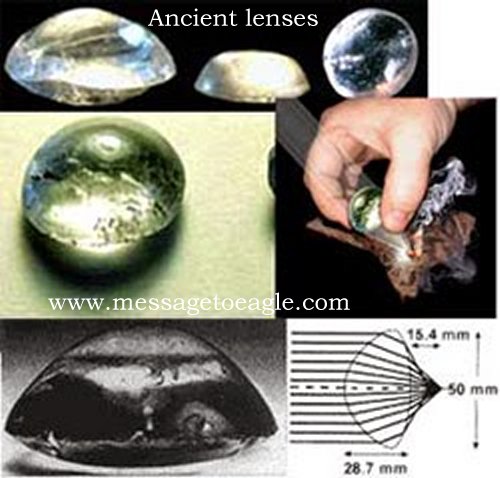
I attended the 8th International Congress of Egyptologists in Cairo in the spring of 2000, and went prepared to deliver a paper on ancient Egyptian optical technology. But I was not allowed to deliver it. I was told there was ‘no appropriate category’. Alas, it is true that there was no such category, as I was the only historian of science present at the Congress of 1500 people, a fact which I found rather depressing.
It might be worthwhile to review just why my discoveries are so important for Egyptology, and everyone interested in the pyramids needs to know about them as well.
First of all, there is the famous question of the orientation of the Great Pyramid. It is so perfectly oriented to the geographical points of the compass that no one has ever been able to understand how this was done, for the accuracy exceeds any hitherto known technology of ancient Egypt.
See also:
Giant Solar Mirrors And Sophisticated Lenses – Advanced Ancient Technology Used By Our Ancestors
Sophisticated Lenses Of Minoans Discovered In The Sacred Idaion Cave
10 Remarkable Advanced Ancient Technologies Ahead Of Their Times
Then there is the equally famous question of how the extreme accuracy of the construction of the Great Pyramid was possible. In 1925, J. H. Cole discovered in his survey that the great pavement, upon which the Great Pyramid partially rests and which surrounds it, is flat to within 15 mm. Earlier scholars had commented that the accuracy of the surface of the Great Pyramid was equivalent to the accuracy of the grinding of an optical reflective mirror in a giant modern telescope.
The original (now largely destroyed) casing stone sides of the structure have been compared in their precision to the mirror of the Mount Palomar Telescope. How were such feats accomplished?
Back in the 1960s and 1970s, the Argentine physicist Jose Alvarez Lopez claimed that it was physically impossible for the Great Pyramid to have been constructed without extremely accurate optical surveying techniques such as are used in theodolites. I met Lopez in the 1970s and he told me this himself, arousing my interest in this question for the first time. But Lopez said to me sadly that he could not find any evidence for any ancient optical technology, so it was all a mystery.
Well, it is a mystery no longer
The Great Pyramid was clearly surveyed with early forms of optical surveying instruments that we could call proto-theodolites. This is all described at great length in my book, and I urge anyone interested in the pyramids to read all about it.
I have proved from archaeological evidence that the technology for surveying the Great Pyramid existed at least as far back as 3300 BC, and doubtless earlier than that, since we can hardly presume that the ivory knife handle was the first such object to exist, as it is already highly sophisticated and suggests a long-standing tradition.
I was surprised as I strolled through the museums of the world and saw ancient lenses on public display labelled as all kind of crazy things – as anything but lenses! When I went to study ancient Greek lenses in the Department of Classical Antiquities at the British Museum, I met one member of the staff who insisted that there never were any ancient Greek lenses. (This is despite the fact that Aristophanes describes one in his play The Clouds, and there are countless ancient references to optical technology in the ancient literature, which I have combed exhaustively and described in my book.)
I then proceeded to photograph and measure some ancient Greek lenses in that very room, which the person concerned refused to acknowledge, and I thought more than a little ironic that there is a display cabinet standing just outside the door to the room containing ancient Greek lenses mislabeled as ‘counters’, and which can be seen clearly magnifying the strands of the cloth underneath them.
Archaeologists have always insisted most strenuously that lenses did not exist in ancient times. Robert Temple’s real-life detective story proves them wrong. His research began with the discovery that an ancient artifact in the British Museum, believed to be a piece of rock crystal, had, in fact, been ground to form a lens.
In this fascinating book, one of the most revolutionary studies in the history of science and civilization to be published for decades, Robert Temple reconstructs the story of light technology in ancient civilization. Dating back at least to 2600 BC to Old Kingdom Egypt, but unknown to modern archaeologists and historians, a science of optics and a sophisticated technology for the manufacture of lenses was widespread and fundamental in ancient times. It inspired awe in cultures who used it, so became encoded in their mythologies and religions. Read more
When I was in the Athens Archaeological Museum studying Mycenaean lenses, which were clearly on display in the Mycenaean Room (where they are mislabeled), I could not help but be aware that a former Deputy Director of the same museum had written an article about an apparent crystal lens which he had himself excavated on Crete, but he neglected to mention in his article that his own museum had many such lenses in display cabinets which anyone could walk into the museum and see on any day of the week.
Ancient lenses tended to be of rock crystal until Carthaginian and Roman times, beginning about the 4th century BC, after which glass lenses became more common (being much cheaper), and crystal lenses then became rare.
I discovered significant numbers of ancient British lenses, mis-cataloged in mineral collections; they had been moved to geological museums from their original archaeological collections and were thought to be ‘crystal specimens’! Some of them were most ingenious, and had what I called ‘resting-points’ protruding from their backs so that they could rest on a surface and an artisan could reach his cutting tool round the back and have both hands free for his work.
In ancient Troy, one crystal lens excavated by Schliemann had a hole in the centre. Some people thought this was an argument for claiming that the lens in question was ‘useless’ because it was perforated in the middle and thus clearly no lens. However, the hole in the centre in no way interferes with the magnification, and offers an extremely clever way for an artisan to insert his cutting tool directly through the middle of the magnifier, and have magnification of his work all around it in a circle!
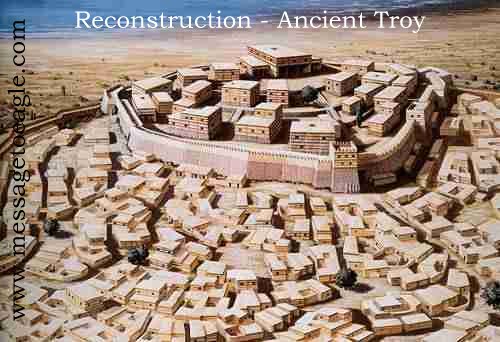
Schliemann excavated about 48 crystal lenses at Troy, but these all disappeared during the Second World War, and all that remained were catalogue descriptions and a single photo of four of the lenses in a group (reproduced in my book).
I tried for many years to find these missing lenses, and a friend who various times approached the museum in East Berlin where the lenses were last known to have been stored was repeatedly lied to and told that the lenses had ‘been destroyed by Allied bombing in the War’. But of course all this was complete rubbish.
When the truth finally came out about the missing Trojan gold hoard found by Schliemann, and that the Red Army had seized it and taken it back to Russia, I suspected the lenses were probably with the gold. And indeed they were. But I have never been granted access to them; the Russians are afraid the Germans will claim them back, and so they won?t let scholars have normal opportunities to study them.
To return to the subject of the ancient British lenses, I should mention that they provide the missing physical evidence that the late Professor Alexander Thom was looking for when he said the accuracy of the astronomical observations of the ancient Britons exceeded the capacities of the naked eye, and he wondered about their optical technology. We now have the lenses that seem to fill Thom’s need.
Indeed, there are good reasons for suspecting that the real purpose of the trilithon lintels at Stonehenge were to support a wooden observation platform for telescopic observations of the moon. In other words, Stonehenge would have been domed. I present the evidence for all of this in my book at some length.
The only group of archaeologists who wholly and enthusiastically welcomed my findings into early optics were the Scandinavian ones, in particular the Swedish archaeologists. Far from being put out with my findings, they were delighted by them. I made very extensive studies of the Viking lenses, and recently one of my articles has been published in Swedish translation in the Swedish archaeological annual, Gotländskt Arkiv (Vol. 72 for the year 2000).
The Vikings were the last of the ancients, as far as optical technology went, and they accomplished miracles of crystal engineering. They actually produced crystal lenses as small as water drops that could magnify three times. I call their achievements ‘micro-optical technology’.
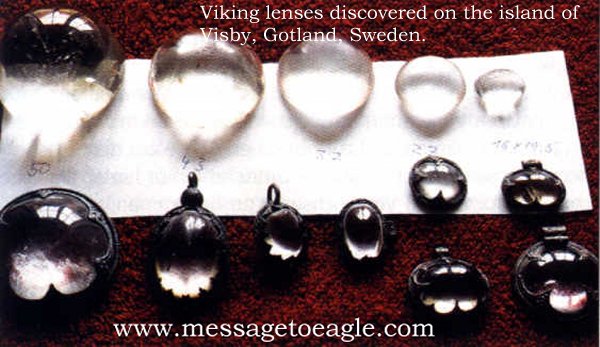
Although my discoveries about ancient Chinese optical technology were rather limited (extracts from ancient texts plus reports of six excavated ancient lenses which I was unable to inspect personally, in one case because of floods preventing me from getting to a provincial museum), The Crystal Sun is being translated into Chinese and I have been asked to lecture about it at China’s leading technical university, Tsinghua University in Beijing, of which I am a Fellow.
My resources not being infinite, I never travelled to Mexico and Peru to inspect the ancient crystal lenses which apparently are to be found there, so the New World is not well represented in my account. I hope others will remedy this deficiency one day. I do, however, have a special account of the so-called ‘Skull of Doom’, a life-sized crystal skull of Maya origin, in my book, since it was the first ancient crystal object I ever studied, when I was 18 years old!
See also:
Ancient Quest For Mechanical Life: Humanoid Robots Of Our Ancestors
Incredible Ancient Machines Invented By Hero Of Alexandria – An Engineer Far Ahead Of His Time
Did Our Ancestors Know About Artificial Intelligence?
There is much weird lore in my book, so much so in fact that it cannot all be absorbed as casual reading. I have written a long chapter on the subject of ‘thunderstones’, and another on meditative hallucinations, all of which are linked in wonderful ways to ancient optical ideas. I give a lot of attention to the religious traditions associated with light, from ancient Egypt down through the ‘light-theology’ of Christians like Robert Grosseteste in the Middle Ages.
But it is not only light that is considered in The Crystal Sun. Shadows are equally important. In ancient Egypt, the science of shadows was far advanced and highly precise. And in this connection I have made a major discovery, which is shown in a photograph taken on 21 December. For I found that there is a special winter solstice sunset shadow cast upon the south face of the Great Pyramid, which nobody had ever noticed before, despite the fact that it has been clearly visible once a year for at least 3500 years. Just think, 3500 missed opportunities!
As the Gnostic Gospel of Thomas likes to say, ‘Those who have ears to hear, let them hear.’ I would extend this to say: ‘Those who have eyes to see, let them damned well start using them! It would make a change!’
What is this winter solstice shadow, then?
It is a shadow cast by the second pyramid, known as the Pyramid of Khafre (or Chephren, which is the Greek form of the name), upon the Great Pyramid at sunset on 21 December.
But the mere fact that one pyramid casts a shadow on another is not the point. What is important is the nature of that shadow. And here is where it all gets very interesting. Anyone who has made a study of the interior of the Great Pyramid will be aware that both the ascending and descending passages inside the structure have the same slope, a curious angle of slightly more than 26 degrees. This in itself might seem a bit odd. But bearing in mind how the ancient Egyptians loved a good tease, it was wonderfully amusing and surprising for me to discover that at sunset on the winter solstice they had chosen to project a giant shadow on the exterior of the same structure having the same slope as the passages concealed on the inside!
It was a bit of a game, surely: what you see on the outside is what you get on the inside, but you can only realise this if you already know it in advance!
In other words, it was for the initiated only. They could have their little laugh to themselves, but nobody else knew what the hell was going on.
I also managed to demonstrate that the ascending passage leading up to the causeway from the Valley Temple beside the Sphinx also has this same slope. Its slope had never been considered or measured before. And yet the fact that its slope is the same as the ascending and descending passages of the Great Pyramid surely indicates a common canon of design for the two structures, at the very least.
If the Egyptians were really intending to cast a shadow on the outside of the Great Pyramid which secretly indicated the nature of the slopes to be found in the concealed interior, then there are important consequences to be considered: it means that the Pyramid of Khafre had to be the precise size it is, and in precisely the position it is, for this shadow to be correctly cast.
That is rather a lot of stone to lug around, just to cast a shadow.
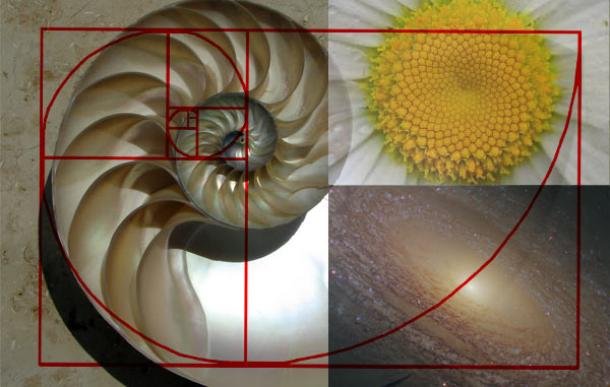
Golden Ratio
So isn’t there something more to this than just the common slope angle? Well, yes, there is indeed. It just so happens that this odd angle of slightly more than 26 degrees is the only acute angle possible for a right triangle to be formed that is known as ‘the golden triangle’, because it embodies the famous Golden Mean Proportion. And it also just so happens that the Golden Mean Proportion is at the basis of the entire canon of ancient Egyptian art and architecture, as I also explain in my book at some length.
And in fact, the shadow if truncated by a vertical line running up the middle of the south face of the Great Pyramid, does actually form a golden triangle, which once again is mirrored on the inside, because it is a similar golden triangle which determines the precise point of commencement of the Grand Gallery on the interior of the pyramid, as I show in a drawing in my book. And as for the vertical line running up the pyramid, that too is real, and has been shown from an aerial photograph, although it is invisible to the naked eye or by any perceptual means at ground level.
There is actually a purposeful slight indentation of a few inches in the construction of the side of the pyramid, discovered in measurements made by Petrie. This ?apothegm?, as geometers call such vertical lines, forms the right angle to transform the solstice shadow into a perfect golden triangle.
So we see here the Egyptians were playfully carrying on with their geometric obsessions in full view of the world, casting giant shadows in golden mean proportion, but for at least 3500 years nobody noticed.
All this blindness! What more have we not noticed?
I hope that people will dip into, if not fully read, The Crystal Sun, because all of these findings are important and need to be known. I was disappointed not to be able to speak at the Cairo Conference and reveal some of these findings to the Egyptologists. For instance, I was able to demonstrate the existence and use of diamond-tip drills in Egypt, but they are so small they can easily be overlooked, just as the much larger lenses always have been. I wanted to warn the diggers that those dirty little objects that might seem like tiny dark pebbles could be diamond drill tips. But alas, they still don?t know.
One of the lessons from all of this is surely the need for archaeologists not to close their eyes to scientific subjects. They have always been reluctant to study the fundamentals of astronomy, so the field of ‘archaeo-astronomy’ is one of struggle and travail, making relatively little headway in the academic community, despite heroic efforts on the part of a few scholars. But as for ‘archaeo-optics’, as its sole investigator, I fear we have a long way to go before its implications will get through to other scholars. And so, I ask you as readers to help out, by calling these things to the attention of anyone you know, and beating some friendly drums. Let’s get the news out!
Written by: Robert Temple – New Dawn
This article has been republished with permission of New Dawn Magazine
Copyright © New Dawn If you appreciated this article, please consider a digital subscription to New Dawn.
Related Posts
-
 Ancient DNA Of Segorbe Giant Reveals A Brutal Event In Medieval Spain
No Comments | Sep 26, 2021
Ancient DNA Of Segorbe Giant Reveals A Brutal Event In Medieval Spain
No Comments | Sep 26, 2021 -
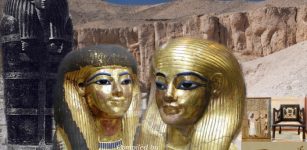 Amazing Tomb Of Yuya And Tjuyu Filled With Ancient Treasures In The Valley Of The Kings
No Comments | Jun 3, 2021
Amazing Tomb Of Yuya And Tjuyu Filled With Ancient Treasures In The Valley Of The Kings
No Comments | Jun 3, 2021 -
 Mythical Stymphalian Birds: Terrible Winged Maidens With Birds’ Feet
No Comments | Feb 27, 2017
Mythical Stymphalian Birds: Terrible Winged Maidens With Birds’ Feet
No Comments | Feb 27, 2017 -
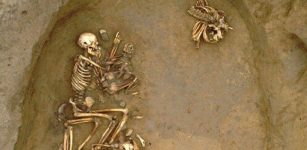 Ancient DNA Has Traced Large-Scale Migrations Into Bronze Age Britain And The Emergence of The Celtic Language
No Comments | Dec 30, 2021
Ancient DNA Has Traced Large-Scale Migrations Into Bronze Age Britain And The Emergence of The Celtic Language
No Comments | Dec 30, 2021 -
 First Genome-Wide Ancient Human DNA From Sudan Shines New Light On Nile Valley Past
No Comments | Dec 22, 2021
First Genome-Wide Ancient Human DNA From Sudan Shines New Light On Nile Valley Past
No Comments | Dec 22, 2021 -
 DNA Evidence Ice Age Humans Migrated From China To The Americas And Japan
No Comments | May 11, 2023
DNA Evidence Ice Age Humans Migrated From China To The Americas And Japan
No Comments | May 11, 2023 -
 India: Plastic Surgery And Genetic Science – Found In Ancient Vedas – Were Practized Thousands Of Years Ago
No Comments | Oct 29, 2014
India: Plastic Surgery And Genetic Science – Found In Ancient Vedas – Were Practized Thousands Of Years Ago
No Comments | Oct 29, 2014 -
 Bellerophon: Great Hero Of Homer’s Iliad Who Was Punished By Gods For His Pride And Arrogance
No Comments | Jul 14, 2021
Bellerophon: Great Hero Of Homer’s Iliad Who Was Punished By Gods For His Pride And Arrogance
No Comments | Jul 14, 2021 -
 Incredible Roseau Stone Reveals 200,000-Year-Old Writing
No Comments | May 26, 2014
Incredible Roseau Stone Reveals 200,000-Year-Old Writing
No Comments | May 26, 2014 -
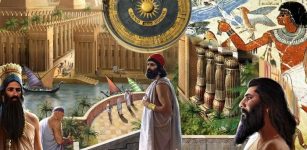 In Ancient Times We Had Weeks Of Different Lengths
No Comments | Sep 15, 2016
In Ancient Times We Had Weeks Of Different Lengths
No Comments | Sep 15, 2016

